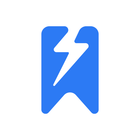
Tagpacker
Tagpacker is a visual bookmarking tool designed to help users collect, organize, and share their favorite links. It moves beyond traditional folders by utilizing tags, enabling a more flexible and intuitive way to manage online resources.
About Tagpacker
Tagpacker offers a fresh perspective on bookmark management, shifting from hierarchical folders to a dynamic, tag-based system. It empowers users to easily collect links from across the web and categorize them using multiple relevant tags, creating a highly interconnected web of saved content.
Key features include:
- Visual Bookmarks: See previews of saved links, making it easier to identify and recall content.
- Flexible Tagging: Assign multiple tags to each bookmark, allowing for diverse categorization and retrieval methods. Group related tags for even more organized browsing.
- Social Bookmarking: Share your collected links with others and discover content curated by the community.
- Powerful Organization Tools: Utilize features like filtering, sorting, and tag groups to efficiently manage large collections of bookmarks.
- Convenient Saving: Use the integrated bookmarklet or browser extensions to quickly save links as you browse.
Beyond basic bookmarking, Tagpacker aims to be a central hub for your online discoveries. Its emphasis on sharing and discovery fosters a community aspect, allowing users to learn from and contribute to a collective knowledge base. The platform's focus on visual presentation and intuitive tagging makes it a compelling alternative for anyone seeking a more modern and flexible approach to managing their digital resources.
Pros & Cons
Pros
- Highly flexible and intuitive tag-based organization.
- Visual previews of bookmarks enhance discoverability.
- Social features allow for content sharing and discovery.
- Easy to save links with bookmarklet and browser extensions.
- Supports creating tag groups for enhanced structure.
Cons
- Relies heavily on user-defined tags for effective organization.
- May have a learning curve for users accustomed to folders.
- Community size and activity can impact discovery features.
What Makes Tagpacker Stand Out
Tag-Centric Organization
Moves beyond traditional folder structures for a more flexible and interconnected way to organize based on relevant keywords.
Visual Preview of Links
Quickly identify saved pages with visual snippets, enhancing discoverability and recall of content.
Community-Driven Discovery
Leverage the shared knowledge of other users to find new resources and content.
Features & Capabilities
13 featuresExpert Review
Tagpacker Software Review
Tagpacker presents a compelling alternative to traditional bookmarking services, particularly for users who find hierarchical folder structures limiting or cumbersome. Its core strength lies in its tag-based organization system, which offers a highly flexible and intuitive way to manage online resources. Instead of being forced into a rigid hierarchy, users can apply multiple tags to a single link, creating a rich network of interconnected content that is easily navigable from various perspectives.
User Interface and Experience
The user interface of Tagpacker is clean and visually oriented. The emphasis on visual bookmarks provides a quick overview of saved content, making it easier to scan and locate specific links. Saving new links is facilitated by both a browser bookmarklet and dedicated extensions for popular browsers like Chrome, offering convenience regardless of browsing habits. The process of adding tags is straightforward, and the platform provides suggestions based on previously used tags, streamlining the workflow. The ability to group tags adds another layer of organization, particularly useful for managing larger collections or distinguishing between broad categories and specific sub-topics.
Organizational Capabilities
The tag-based system truly differentiates Tagpacker. Users are not restricted to placing a bookmark in a single folder. A link about 'productivity tools' could be tagged with 'productivity', 'software', and 'web apps', making it discoverable through any of these tags. This multi-dimensional organization is highly effective for managing diverse online resources. Sorting and filtering options allow users to quickly narrow down their collections based on specific tags or tag groups, providing efficient access to saved content. The visual representation of tags and their relationships, while not explicitly a mind map, conceptually aligns with how many users naturally associate information.
Social and Community Features
Tagpacker incorporates social bookmarking features, enabling users to share their collected links and explore content shared by others. This community aspect can be valuable for discovering new resources and gaining insights from users with similar interests. The platform's discovery engine leverages this shared data to highlight trending tags and popular links, fostering a sense of community and facilitating content discovery beyond individual collections.
Additional Features
While not as extensive as some enterprise-level knowledge management systems, Tagpacker includes features that enhance its utility. These can include aspects like the mobile-friendly design, ensuring accessibility across devices. The potential for future development or integration with other services through APIs (if available) could further expand its capabilities.
Comparison to Alternatives
Compared to traditional browser bookmark managers or even some cloud-based services that rely heavily on folders, Tagpacker's tag-centric approach offers greater flexibility. While some note-taking applications also incorporate tagging, Tagpacker's primary focus remains on link collection and organization with a strong visual component and a social layer, positioning it distinctly within the bookmarking and content curation space.
Conclusion
Tagpacker is a well-designed visual bookmarking tool that excels in providing a flexible and intuitive way to organize online resources. Its tag-based system, combined with visual previews and social features, offers a compelling alternative to standard bookmarking methods. It is particularly well-suited for users who manage a large volume of links and prefer a more dynamic and interconnected organizational approach. While it may not replace a full-fledged knowledge management system, for bookmarking and web content curation, Tagpacker stands out as an effective and user-friendly solution.














